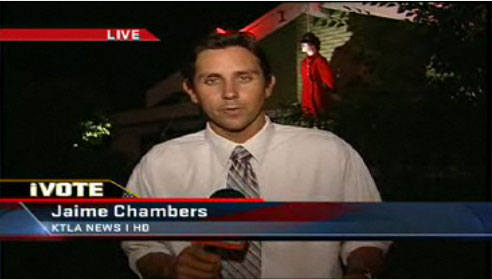In recent days two events have focused our attention on the sometimes volatile combination of teen angst and social media websites. The first was the “broadcast” suicide of a 19-year-old man who took an overdose of prescription medications while a chat room of onlookers watched his live web cam stream. Some of the viewers urged Abraham Biggs on–either indifferent to his threats to take his life or willing to take the chance that he was bluffing. Perhaps it is not much different from sidewalk gawkers calling out to a would-be suicide victim to “jump” and “get it over with,” but it still suggests a calloused indifference and sense of alienation that comes from a failed sense of community.
The second event was the jury trial of the woman accused of cyber-bullying in the Megan Meier case. The internet hoax resulted in 13-year-old Megan taking her life after being dumped by a fictitious male character created by the 49-year-old defendant Lori Drew. While found not-guilty of violating the more severe Computer Fraud and Abuse Act, Drew was found guilty of three minor offenses including the violation of MySpace’s terms-of-service agreement which prohibits the use of phony names and the harassment of other users. Still, Drew could face up to three years in prison for the conviction. The trial highlighted the fact that we currently have few law-enforcement tools designed to address these new forms of computer crimes, and we’re likely to see new cyber-bulling legislation enacted in response.
These sad episodes of teen suicide raise serious questions about the porous nature of the LCD screen that separates our online and off-line lives. Megan’s response to a make-believe “boyfriend” and forum members’ collective failure to respond to Abraham’s calls for help have this in common–both speak volumes about how we relate to others in virtual space and how those virtual relationships have life-changing, real-world consequences.

 According to a recent study published in Pediatrics, teens who watch more explicit sexual content on TV are twice as likely to become pregnant or father a child before they reach age 20.This is the first time that a study has actually shown a relationship between exposure to explicit content on TV and pregnancy. This is alarming when you consider that the US has double the teen pregnancy rate of other developing countries. It is particularly troubling now as the country has seen its first increase in teen pregnancy in 14 years.
According to a recent study published in Pediatrics, teens who watch more explicit sexual content on TV are twice as likely to become pregnant or father a child before they reach age 20.This is the first time that a study has actually shown a relationship between exposure to explicit content on TV and pregnancy. This is alarming when you consider that the US has double the teen pregnancy rate of other developing countries. It is particularly troubling now as the country has seen its first increase in teen pregnancy in 14 years. Trick or Treaters in West Hollywood, CA may be shocked to find an effigy of Sarah Palin part of the seasonal decorations at the home of Chad Michael Morrisette. A likeness of John McCain is displayed in the chimney surrounded by flames. While some say that it is simply a visual prank, others are calling it a hate crime that should be removed. National media and the blogosphere have begun to take note and according to the
Trick or Treaters in West Hollywood, CA may be shocked to find an effigy of Sarah Palin part of the seasonal decorations at the home of Chad Michael Morrisette. A likeness of John McCain is displayed in the chimney surrounded by flames. While some say that it is simply a visual prank, others are calling it a hate crime that should be removed. National media and the blogosphere have begun to take note and according to the 
 There’s a new film out by Michael Moore (Roger & Me, Bowling for Columbine, Fahrenheit 9/11, Sicko) but you won’t find it in theaters. In an attempt to allow as many people as possible access to the film, Moore is making the film available as a computer download at
There’s a new film out by Michael Moore (Roger & Me, Bowling for Columbine, Fahrenheit 9/11, Sicko) but you won’t find it in theaters. In an attempt to allow as many people as possible access to the film, Moore is making the film available as a computer download at 

 If you’re like most people you might not pay a lot of attention to the browser that you’re using to access the internet. After all, a browser is simply a program that provides access to the real content that you’re after…kind of like your computer’s operating system provides access to the applications you use. So whether you use Internet Explorer (IE), Firefox, or Opera may depend more on what is currently installed on your computer…and for most people running the Windows OS that is IE. When browsers were brand new – in the early 90s – the battle was between Netscape Navigator and IE. But Microsoft’s dominance in the OS wars led to the demise of Netscape and the victory for IE as the default browser. In recent years their market share has slipped significantly, but they still command a decisive lead over the next most popular browser, Firefox.
If you’re like most people you might not pay a lot of attention to the browser that you’re using to access the internet. After all, a browser is simply a program that provides access to the real content that you’re after…kind of like your computer’s operating system provides access to the applications you use. So whether you use Internet Explorer (IE), Firefox, or Opera may depend more on what is currently installed on your computer…and for most people running the Windows OS that is IE. When browsers were brand new – in the early 90s – the battle was between Netscape Navigator and IE. But Microsoft’s dominance in the OS wars led to the demise of Netscape and the victory for IE as the default browser. In recent years their market share has slipped significantly, but they still command a decisive lead over the next most popular browser, Firefox.